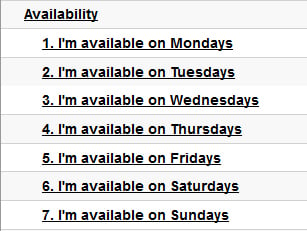

Related Posts
Subscribe to Our Blog
Subscribe to receive email notifications every time we publish new insights, news, and thought leadership to our blog.

Taking measures to optimize and create an effective volunteer program helps you increase your nonprofit’s reach in the community. A strong volunteer program attracts top-performing volunteers – not to mention community support, grants, and quality staff members.
Want to create an effective volunteer program? Do volunteers continue to serve after their initial volunteering experience? What can you do to build relationships and boost the effectiveness of your volunteer program?
Below are a few tips for increasing effectiveness and impact.
Get to know your volunteers and their interests. Why are they volunteering? Are volunteers feeling fulfilled by their experiences with your organization? What do your volunteers hope to gain from their experiences with your nonprofit?
To answer these questions, you may consider updating your screening and evaluation processes to begin gathering this data. If you never ask, volunteers are less likely to share their innermost thoughts with you.
Take, for example, a volunteer who desires to meet new people while serving the community. Sticking this person behind a desk or stamping envelopes is not going to result in a positive experience for either party. Remember, volunteers who feel like their work is important will continue to volunteer. Those who don’t feel that their work makes a difference will seek other opportunities – and there are plenty out there.
Writing detailed volunteer job descriptions helps them to understand the magnitude of their roles and the impact on your organization. By setting clearly defined objectives and work responsibilities, you can reduce a common volunteer frustration: miscommunication.
The last thing you want to do is waste a volunteer’s time. Establish a job description with the desired outcomes of a particular project, the volunteer’s role, the skills needed, the value of the project to your nonprofit, and the tasks necessary to complete the project. Doing so will help your volunteers understand how they fit into your organization’s mission.
For tips on writing effective volunteer job descriptions, here are some well-written examples.
It’s equally important for your organization to set an open line of communication with volunteers. Whether done through email, text, or calling, communication is best facilitated when volunteer information is properly organized and easily accessible.
VolunteerHub’s user groups feature simplifies the volunteer coordination and communication process. When volunteers sign up to help, they can be automatically added to a specific user group.

Need a last-minute volunteer for Saturday’s afternoon shift at the food pantry? Send a quick email to past volunteers who have helped in the past. You’re likely to fill that shift in a matter of minutes, rather than sorting through handwritten notecards.
Subscribe to receive email notifications every time we publish new insights, news, and thought leadership to our blog.